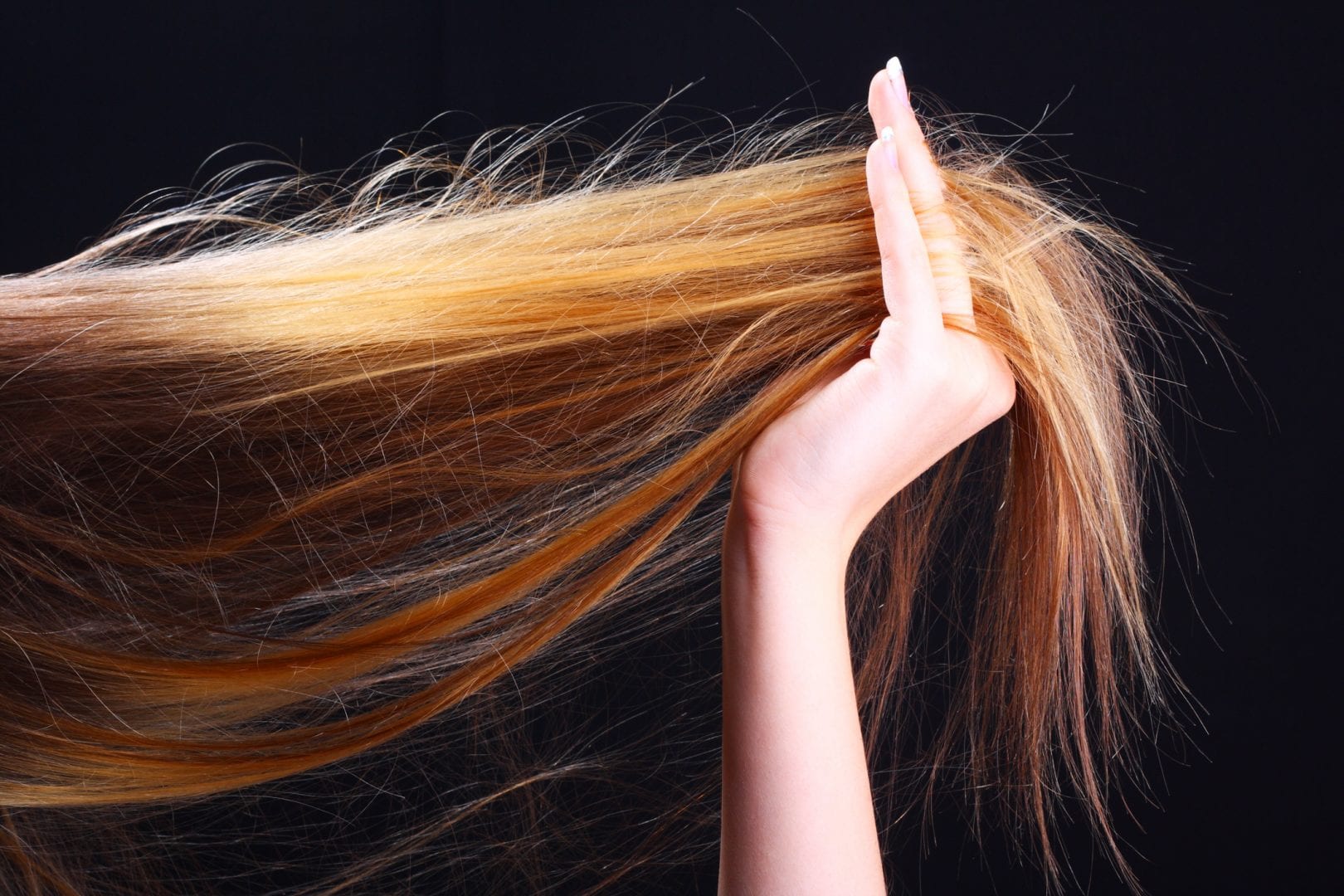If you’ve ever wondered what the benefit of having hair reconstruction is, we’ve already told you that it’s to restore your hair’s keratin.
Firstly, if you are here reading this article, you are probably looking for an efficient treatment for your hair. If it really is for this reason, you are in the right place. Well, today we will talk about hair reconstruction, the treatment that can restore all the natural properties of your locks.
In fact, hair reconstruction, or rather, hair botox, can also restructure the hair fiber and repair cracks that were probably caused by chemical processes, which degrade and damage the hair shaft. Furthermore, hair reconstruction manages to restore the keratin they need to the hair.
It is worth highlighting that this keratin replacement helps restore the integrity of the hair. Consequently, it can help the hair to become more suitable for simple treatments. Like, nutrition and hydration. In general, hair without reconstruction can become fragile, brittle and lacking nutrients.
Therefore, to help you and inform you about this type of treatment, we have separated everything you need. Including step-by-step instructions on how to do it at home.
Importance of hair reconstruction
Above all, as we have already said, hair reconstruction serves to replace the keratin in our hair. In fact, keratin is one of the basic substances that make up hair. In addition to this, we can also highlight water and lipids. However, it is keratin that guarantees the resistance, strength and elasticity of the hair.
In other words, if your hair is dry, brittle or porous, it means it is low in keratin. Consequently, your hair needs hair reconstruction. However, if you don’t know how to decipher whether your hair is porous or not, we advise you to do a test at home.
In fact, this test is simpler than you might imagine. In fact, you just need to drop a strand of your hair into a glass of water. Therefore, you see, if the thread sinks, it means it is porous and damaged. In other words, in need of reconstruction. If it doesn’t sink, it means it’s healthy.
In general, the main causes of reducing hair keratin are chemical procedures, excessive exposure to the sun, hot water, excessive hair drying, chlorine and sea water. Therefore, if you make excessive use of any of these items, it means that your hair needs a little more attention.
Who should undergo hair reconstruction
- People who have had damaged hair after chemical procedures;
- Woman with thin, fragile and brittle hair;
- Women who have psychophysical injuries. In other words, their hair was damaged due to surgery, illness or smoking;
- Women who use heat tools, such as a hairdryer, excessively.
How to treat scab hair with hair reconstruction
Firstly, it is important to highlight that scab hair is when the natural hair roots grow and mix with the rest of the hair, which is still chemically treated. Because of this mixture, in general, some natural hair behaves in a more “rebellious” way, if you know what we mean.
Basically, scab hair is more common in curly or frizzy women, who are in the middle of a hair transition. Therefore, it is even more recommended to undergo hair reconstruction. Because, doing it interspersed with hydration and nutrition treatments, that is, a hair schedule, can make your hair healthier.
Procedure
Before you start the treatment, the professional will first need to see the condition of your hair. And also what were the causes that led to the degradation of your locks. After he understands more about your hair, he will indicate the number of sessions you will need to complete your hair reconstruction.
In general, these two factors are what determine the ability of your strands to absorb the reconstruction agents, which will enter during the treatment. In fact, the keratin that will be applied in the treatment cannot be applied weekly, ok?
In fact, it can only be applied every two weeks. However, in more serious cases, we recommend that you go to the salon weekly, so that the specialist can stabilize the pH of your hair. And also so that it can replace the mass lost in chemical processes.
In calmer cases, we recommend that you take a break of 20 to 30 days from one session to the next. Above all, the ideal is to talk to a professional. This way, he will assess the condition of your hair and create a specific schedule for them.
How to do hair reconstruction at home
Above all, the home method is a simpler and cheaper way to carry out hair reconstruction. In fact, you only need a shampoo and a replacement hair mask. However, before buying any product, remember to check if they have active ingredients that allow the strengthening and reconstruction of the hair fiber.
This is important to note, as each brand produces different products from each other. But, in general, the products contain proteins, minerals, keratin, bio-collagen, elastin, panthenol and other vitamins. And above all, remember to maintain a regular hair care routine at home.
1st step by step
- Wash your hair twice, just with shampoo, ideally it should be very clean;
- Soon after, with clean and damp strands, apply a reconstruction cream. After applying, massage the hair, strand by strand, covering for better absorption of nutrients. Therefore, let it act for a while, normally each product indicates an appropriate time;
- Rinse your hair well and apply conditioner. Basically, it will make the hair cuticles close, without losing the keratin acquired with the mask.
- Finish as you prefer.
2nd step by step
- First, wash your hair with a deep cleansing shampoo (anti-residue);
- Again, wash your hair, but this time wash it with reconstructive shampoo;
- Then, apply keratin (or nanokeratin) to your hair;
- Once done, apply the mask or reconstructive cream. And remember to massage your scalp;
- Therefore, wait around 20 minutes for the product to penetrate the scalp;
- After the break, wash your hair again to remove all the product;
- Afterwards, apply a sealant or thermal protector.
- And finally, if you want, you can dry your hair.
Basically, this one is a little more complicated than the previous one. Therefore, don’t do it without first asking a professional. Well, it will better inform you which technique will be best for your specific hair type.
Which professional is best suited to carry out hair reconstruction?
Above all, we recommend trichologists, who are doctors who specialize in hair. Basically, they are professionals who can indicate the need for hair reconstruction, and also provide a diagnosis of your hair.
However, you can also undergo reconstruction with beauticians trained in hair therapy. In fact, some even manage to apply it. In addition to these professionals, some hairdressers also perform this procedure. They even evaluate which product to use and which method is best suited for the client.
Care
Before hair reconstruction
Above all, the hairdresser must first stabilize the pH of the hair. In fact, this process is very important, as it may be responsible for achieving a good result after reconstruction. Basically, this is recommended, because when hair is damaged, it normally has an alkaline pH, that is, more acidic.
Therefore, before taking the first step, carry out an assessment with an experienced professional.
After hair reconstruction
If you think that the process only happens in the salon, you are wrong. Because after finishing the treatment in the salon, you still need to continue the process at home. But, calm down, there is no difficulty at all. In fact, you just need to use low pH shampoo, conditioner, and mass replenishing mask regularly.
In addition to these precautions, we also recommend that you avoid using straighteners or any other source of heat. And of course, also avoid very aggressive chemical processes. For example, bleaching, straightening, progressive brushing and others. First give your hair some time, and then go back to the chemical processes.
Contraindications to reconstruction
- Women who have healthy hair that does not need replacement;
- Women whose hair is stiff, dull and without movement. After all, the ideal solution for these women is to moisturize their hair;
First of all, test the products on yourself to avoid allergic reactions.
Differences between hair reconstruction and cauterization
Above all, they are very similar processes. While reconstruction is the replacement of the mass of the strands. In other words, it replaces amino acids and resistance that were probably lost. Cauterization, or keratinization, is a process carried out with hydrolyzed keratin, which even adheres to the hair fiber after activation with heat.
Basically, the intention is to make the keratin transform into a protective film, which regroups the hair cuticles. Consequently, it leaves hair healthier, shinier and more resistant. However, both processes are recommended for hair that is extremely damaged by chemical processes.
However, hair reconstruction is usually the most suitable method for women with extremely weak hair. Which, in fact, cannot even withstand those thermal actions, common in cauterization treatment.
But, out of curiosity, you can do both processes. First you start with reconstruction, after the hairs become more resistant, you move on to cauterization. But, don’t harm your hair by using heat activation tools.
Tutorials
Anyway, what did you think of our article?
Come check out another article from Women’s Area: Low Poo and No Poo – What it is, what it’s for, differences between the techniques
Sources: Tô de Cacho, Minha vida
Featured image: Transform yourself

Sign up for our newsletter and stay up to date with exclusive news
that can transform your routine!
Warning: Undefined array key "title" in /home/storelat/public_html/wp-content/plugins/link-whisper-premium/templates/frontend/related-posts.php on line 12
Warning: Undefined array key "title_tag" in /home/storelat/public_html/wp-content/plugins/link-whisper-premium/templates/frontend/related-posts.php on line 13




